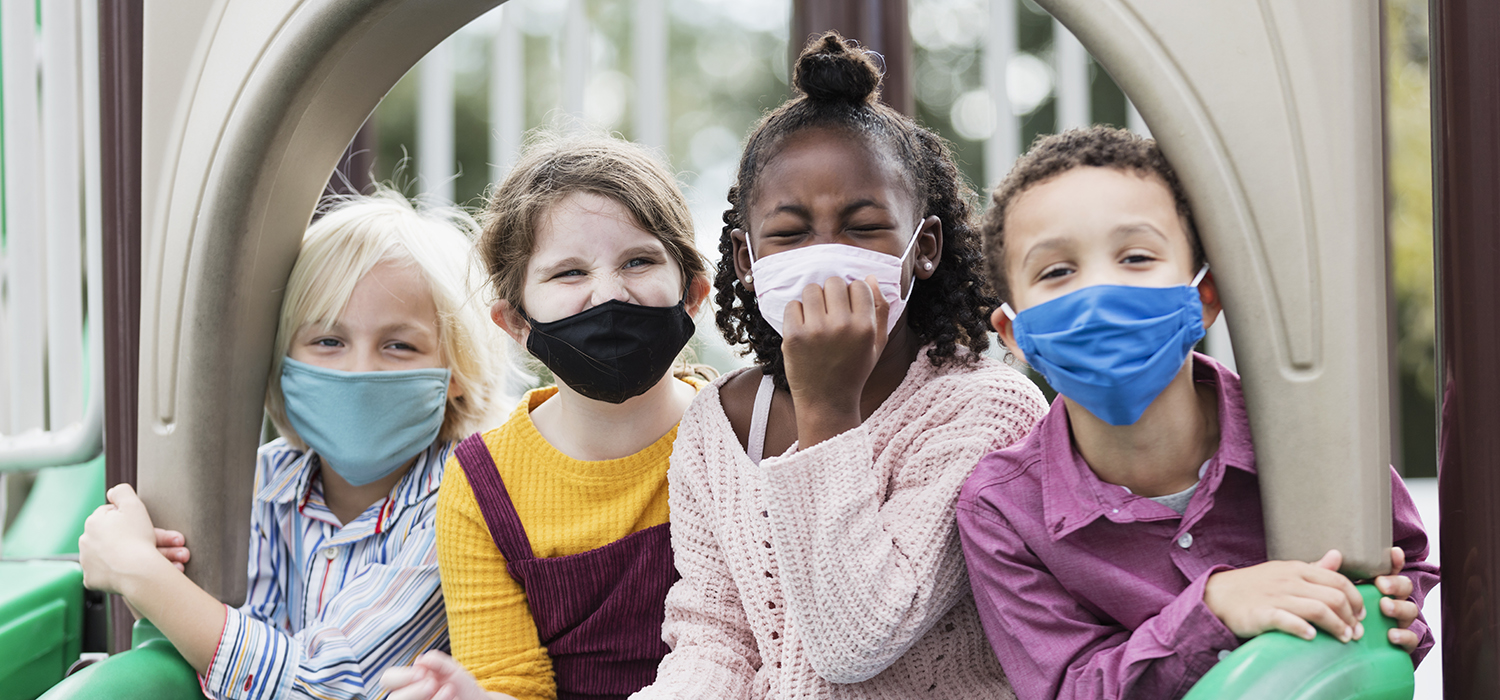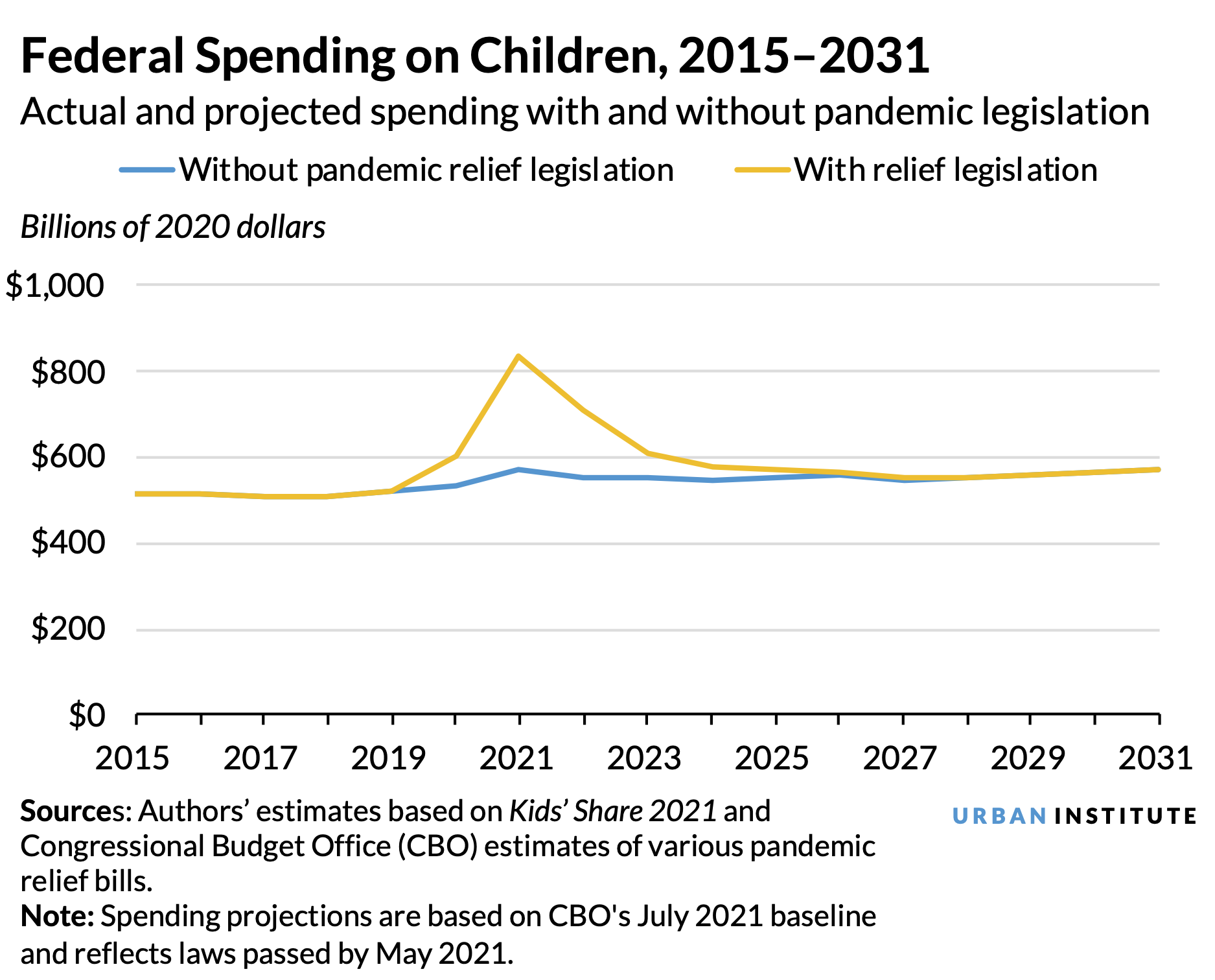
Over the past two years, Congress has enacted a series of pandemic relief bills providing federal funds to help American families, businesses, schools, governments, and other institutions regain their footing. This new spending led to an unprecedented increase in federal spending on children that reduced child poverty during a recession, fed kids when schools were closed, and helped schools and child care programs reopen safely.
Federal spending on children increased dramatically during the pandemic
In total, we estimate that pandemic response legislation enacted by May 2021 added more than $600 billion to projected spending on children between 2020 and 2027. Though a small share of the more than $5 trillion increase in federal spending from pandemic relief bills, this is a major increase in federal spending for children. The spending increase is equivalent to more than one year of annual federal spending on children in the prepandemic world. For comparison, the federal response to the Great Recession increased spending on children by about $170 billion (all figures are in 2020 dollars).
Federal spending on children began rising in 2020 and is projected to increase dramatically in 2021 and to remain higher than prepandemic levels through 2027. We estimate children’s spending will be nearly 50 percent higher in 2021 than it would have been without the pandemic response.

The two largest spending items on children were the elementary and secondary education portions of a new education stabilization fund and three rounds of stimulus checks or economic impact payments that included payments for children ranging from $500 to $1,400 per child. The education stabilization fund provides money to states to support students and teachers in public and nonpublic elementary and secondary schools. And as detailed in the newly released Kids’ Share 2021 chartbook, stimulus payments for children are estimated to total $31 billion in the fiscal year 2020 and $147 billion in 2021.
Other large provisions include the following:
- a one-year expansion of the child tax credit that is projected to lower child poverty
- increased benefits through the Supplemental Nutrition Assistance Program, which helped lower food insecurity between 2020 and 2021
- a significant increase in child care spending that includes stabilization grants to help child care providers survive under challenging pandemic conditions
Dozens of other children’s programs and tax credits received smaller increases.
Children’s gains will not be sustained without further action
In a pandemic, as in other times, public investment in children is an investment in our nation’s future, improving children’s well-being and long-term prospects and making them more productive adults. But pandemic response measures are temporary, and as the funding is exhausted, children’s spending is expected to return to prepandemic levels by 2027. The kids’ share of the federal budget is projected to fall below prepandemic levels, as increasing percentages of the federal budget go to health and retirement programs for older and disabled adults, as well as interest on the federal debt.
Yet, Congress may enact legislation to offset the projected long-term decline in the kids’ share of the federal budget. Some versions of the Build Back Better plan include $400 billion for preschool and child care over 10 years and an additional one-year expansion of the child tax credit. If passed, this would represent another major investment in children, with perhaps as big an impact on their development, health, and well-being as the pandemic relief bills.
The Urban Institute has the evidence to show what it will take to create a society where everyone has a fair shot at achieving their vision of success.
Tune in and subscribe today.
The Urban Institute podcast, Evidence in Action, inspires changemakers to lead with evidence and act with equity. Cohosted by Urban President Sarah Rosen Wartell and Executive Vice President Kimberlyn Leary, every episode features in-depth discussions with experts and leaders on topics ranging from how to advance equity, to designing innovative solutions that achieve community impact, to what it means to practice evidence-based leadership.